Naval Aviation of the Russian Navy. Current status and prospects. H. 2
So, the first - the author suggested that in 2011-13. tactical fighter and strike aircraft were completely withdrawn from the Navy, with the exception of the Admiral TAVKR air group fleet Soviet Union Kuznetsov ”and the Black Sea attack regiment. However, thanks to respected readers, it turned out that the 865th separate fighter aviation regiment, based in Yelizovo (Pacific Fleet), also remained in the Navy. More precisely, not so that it was preserved, the regiment, as you can understand, was disbanded, however, the fleet left two MiG-31 squadrons, which today are completely or partially replaced by the MiG-31BM. In addition, according to the bmpd blog, the 4th separate guard naval assault aviation regiment as part of the Baltic Fleet was also not transferred to the Air Force, but was disbanded - the only Su-24M and Su-24MR squadrons remained in the fleet. Apparently, the situation was such that, despite the decision to transfer tactical aircraft, in some cases the Air Force simply refused to take part in the composition of the almost absent materiel, which is why such air regiments were simply disbanded and reduced to the size of a squadron.
The second mistake is that the number of IL-38 today is almost half that of the author. Publications usually state “about 50”, but it seems that those planes that will never be able to take to the air have gotten into this figure. Most likely, the IL-38 modernization program to the IL-38H state covers all aircraft that are capable of today, that is, if you plan to upgrade the 28 IL-38, then we have just as many airplanes left.
And finally, the third - the qualification “pilot-ace” does not exist, after the pilot of the 1 class follows the pilot-sniper.
Many thanks to all who pointed out the author to his mistakes.
Taking into account the above-mentioned amendments, the estimated number of naval aviation of the Russian Navy today, and in the near future (up to about 2020 g) will be:
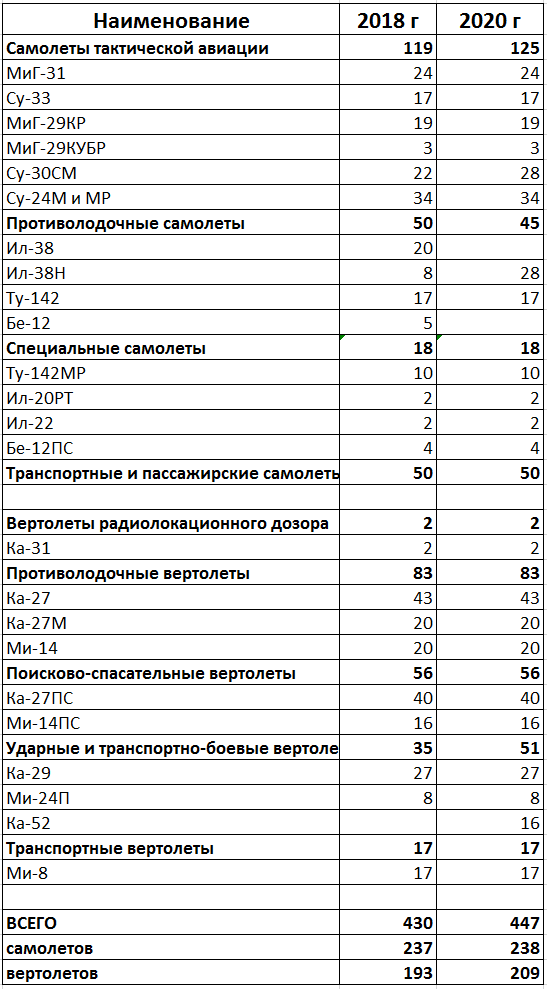
Tactical aircraft
Strictly speaking, 119 tactical aircraft seem to be a rather formidable force, but - until we take a closer look at these planes.
MiG-31 and MiG-31BM - these aircraft, for all their undoubted advantages (supersonic cruising speed, two crew members, which is important for the "sea" aircraft), still do not fully meet the tasks of naval aviation of the Russian Navy. The problem lies in the fact that the MiG-31 was created as an interceptor fighter, that is, an aircraft aimed at fighting bomber-rocket carriers with high-altitude reconnaissance aircraft, as well as enemy cruise missiles. But in no case was the MiG-31 a fighter of air superiority, the creators did not put such opportunities in it.
Although the MiG-31 can carry short-range air-to-air guided missiles (hereinafter referred to as URV), but the aircraft is not intended for close air combat — for this, the maneuverability of the MiG-31 is completely inadequate.
At the same time, the long range explosives UR P-33 and P-37 do not cope well with the destruction of tactical aviation - after all, the main target for such missiles are strategic bombers and cruise missiles. But an attempt to attack enemy fighters from a long range with them will most likely be doomed to failure, because with the timely detection of such missiles, modern EW, combined with an energetic anti-missile maneuver, reduce the probability of hitting the target to very small amounts.
All this, of course, does not mean that the MiG-31 is unable to fight against the tactical and deck aircraft of the enemy. In the end, with all the advantages that the multinational air forces had in Iraq, the F-A-18 Hornet was shot down by an Iraqi MiG-25 using a short-range air defense missile during the Storm in the Desert. In another combat episode, two MiG-25 fought four of the F-15, and, despite the fact that the latter fired several missiles at them, they did not suffer losses, although they themselves could not harm the enemy.
Of course, the upgraded MiG-31BM have much greater capabilities than the Iraqi MiG-25, but their real vocation is the destruction of strategic bombers and cruise missiles flying to us through the North Pole, as well as the Tomahawk and the like. Thanks to the modernization of the MiG-31BM, they were able to carry various air-to-surface missiles of the X-25, X-29, X-31 and X-59 families, which allows the use of interceptors as attack aircraft, including against enemy ships. But, due to the low maneuverability and the lack of modern EW complexes (information that MiG-31BM are equipped with the latter, the author does not have), their use is rather limited, and despite equipping the entire modern nomenclature of UR CENTURIES (including RVV-BD , SD and DB) air combat from them should not expect much.
Su-33 - sadly admit it, but this plane is outdated. Its combat capabilities are not too superior to those of the classic Su-27. Modernization, of course, made it better by expanding the range of used ammunition and giving the ability to destroy ground targets, but this is not enough to speak of the Su-33 as a modern, fully-fledged fighter.
Su-24M / M2 - for its time it was a fairly good plane, but its time has passed. Su-24 today was decommissioned by the VKS RF, and the upgraded version of the М / М2 was supposed to be “sent for well deserved rest” to 2020 g or a little later. It is possible that the Black Sea Su will be able to delay the service longer, but of course, this aircraft is no longer suitable for a modern battle against a high-tech enemy. Of course, the Su-24 rating increased immeasurably after “blinding” them by using the Eib Khibiny complex of the American destroyer Donald Cook radars, but, first, the original source news does not deserve the slightest confidence, and secondly, the Khibiny complex was never installed on the Su-24.
In fact, the only modern (though not the newest) tactical aircraft in service with the Russian Navy are the 19 MiG-29KR, the 3 MiG-29KUBR and, roughly, the 22 Su-30CM, and the entire 44 aircraft. And, of course, on the 4 fleet this is absolutely not enough.
We have already examined the MiG-29KR / KUBR in sufficient detail in a series of articles on the Admiral of the Fleet of the Soviet Union Kuznetsov, and it makes no sense to repeat - this is an 4 ++ generation aircraft, somewhat inferior, but somewhat superior to the latest versions. Super Hornet. Entered into service by virtue of complete lack of alternative, as it is the only one currently deck multipurpose fighter of the Russian Federation. These aircraft are completing the Kuznetsov air group; no additional supplies are planned.
Another thing - Su-30CM.
This aircraft, about which the Chief of Naval Aviation of the Navy, Major General Igor Kozhin said:
Let's see what is the future base aircraft of the Navy.
Su-30CM is by far one of the heaviest multi-purpose fighters: empty mass is 18 800 kg (Su-35 - 19 000 kg, F-22A - 19 700 kg), normal take-off - 24 900 kg (Su-35 kgNNXX) (Su-25 kg) 300 22 kg (Su-29 200 kg) 38 kg, F-800A - 34 500 kg), maximum take-off - 38 000, 30 31 and 7 770 kg, respectively. In this case, Su-12SM it equipped with the weakest engines among all these planes: his AL-500FP has cravings maximum besforsazhny 35 8 kg, afterburner - 800 14 kg, while the Su-500 engine - 22 10 and 500 15 kg, and F-876A - 30 35 and 22 2,25 kgf respectively. Therefore, it is not surprising that the speed of the Su-30CM is lower than modern heavy fighters - while the Su-1,96 and F-30A are capable of accelerating to 1,8M, the limit of the Su-XNUMXCM is only XNUMXM. However, it is unlikely that the Su-XNUMXCM loses much of this as a fighter - no one doubts that the French “Rafale” is an extremely dangerous air fighter, but its speed is even lower - to XNUMXM.
However, relatively weak engines adversely affect such an important indicator of the aircraft as the thrust-to-weight ratio - in Su-30CM with a normal take-off weight, it is only one, while in Su-35 - 1,1, in "Raptor" - 1,15. The area of the Su-30CM wing (as on all Sukhoi aircraft) is relatively small, 62 sq. M. The "Raptor" it is more than 25,8% (78,04 m), but due to its design scheme, the fuselage of the domestic aircraft is also involved in creating lift, the load on the wing of these two machines with a comparable load is not so much different.
In general, Su-30CM seems to be losing both Su-35 and F-22A in terms of maneuverability, although in the case of the latter it’s not so simple: firstly, besides thrust-carrying capacity and wing loading, it would not hurt to know the aerodynamic quality of the aircraft, but also the capabilities provided by the SIP plane, and secondly, the Su-30CM engines are capable of changing both vertical and horizontal thrust vector while F-22A engines are only vertical.
As a result, if we consider only the figures of speed / thrust-load / load on the wing, then the Su-30CM looks like a very mediocre fighter, but taking into account the above (as well as other, unaccounted for) factors, it is in close maneuver combat at least not inferior to modern American and European airplanes (including - Eurofighter Typhoon - speed 2,3М, thrust-to-weight 1,18, wing load - 311 kg per square meter), which was shown by training battles in which Su-30 of various modifications of the Air Force of India and other countries participated.
So, Su-30CM maneuverability today is, if not the best, then one of the best among multi-role fighters, both heavy and light. However, unlike most modern aircraft of this class, it is a two-seater, and as such, much more versatile than a single-seater.
We have already said that it is possible to create a single-purpose multifunctional aircraft that can work equally well for air and ground targets, but it is not easy to prepare an equally multifunctional pilot. The situation is considerably simplified when there are two people in the crew - they divide the functionality in half, and due to this specialization, the two of them are able to solve more tasks with the same efficiency as one pilot does. The author of this article does not know whether a trained Su-30CM crew can solve impact tasks as effectively as they could be solved, for example, attack aviation pilots and at the same time fight in the air, not inferior to fighter aviation pilots, but if not , they are still able to approach such an ideal closer than a single-seater pilot.
I must say that Su-30CM has the advantage over most airplanes of its class - its maximum flight range at altitude is 3 000 km, while the same Raptor reaches 2 960 km only when two PTBs are suspended (F-35А, by the way - 2 000 km without PTB). And only at Su-35 it is higher, reaching 3 600 km. The long-range Su-30CM gives the aircraft great advantages, as it increases its combat radius, or, when flying at an equal distance, it has more fuel for afterburner and air combat. The time spent in the air Su-30CM is about 3,5 hours, which is higher than most fighters (usually - 2,5 hours). Here, the crew of the 2 man also gives an advantage, as it leads to less pilots fatigue, in addition, the flight in the absence of landmarks (a common thing at sea) is psychologically tolerated by such a crew more easily than a single pilot.
Both Su-35 and Su-30CM have “work” capabilities for land and sea targets, but the payload (the difference between empty weight and maximum take-off weight) of Su-30CM is 20 tons, and it is higher than that of Su-35 ( 15,5 t) and the "Raptor" (18,3 t).
As for the SU-30CM avionics, it must be said that this is the first domestic fighter with an open architecture. What does this mean? The traditional architecture of the aircraft implied that communication between their equipment was carried out through specific communication lines, information exchange protocols, etc. As a result, if there was a desire to modernize the aircraft, changing any equipment or adding new ones, then this necessitated redesigning the rest of the avionics that were in contact with it, and often it was necessary to change the design of the aircraft, lay new communications, etc. It was a very long and expensive process.
But in an open architecture, this is not necessary - the interaction of various equipment is carried out through a standard data transmission bus. In this case, the Su-30 became the first domestic digital aircraft, since all information flows "converged" in the central computer. As a result, the installation of any new equipment almost never requires the completion of the rest - all issues of their interaction are resolved by means of appropriate “additional lists” of software. Vladimir Mikheev, Advisor to the First Deputy General Director of the Radioelectronic Technologies Concern, described it this way: “A fundamentally new approach was developed for this aircraft - the so-called open architecture, when we could connect any number of systems to the central computer weapons, flight-navigation, protective. And all the systems in this plane were first made digital. ”
Generally speaking, this was done in order to meet the diverse requirements of the overseas Su-30 buyers. The plane was intended to be exported, it had to be delivered to various countries that had their own specific requirements for the composition of its avionics: they would be prohibitively expensive and expensive to implement on the basis of a classical architecture plane, which would hardly suit the customers. Well, thanks to the open architecture, virtually any equipment could be integrated into the Su-30, including foreign-made equipment.
However, this approach not only “donated” Su-30 a huge export potential, but also provided unprecedented opportunities for upgrading the aircraft - after all, it turned out that you can install almost any equipment acceptable for the design of the aircraft on the aircraft. Su-30CM is most similar to the modern computer architecture of IBM, which, in essence, is the designer "assemble yourself." Began to slow down? Add RAM. Can not cope with the calculations? We put a new processor. Not enough when buying money for a good sound card? Nothing, save up and buy later, etc. In other words, for its time, the Su-30 family of aircraft (perhaps in the Su-30MKI version) came very close to the ideal combination of tactical, technical and operational qualities for a multi-purpose fighter, while possessing a very reasonable price, which predetermined the great success of these aircraft on world market (compared to other heavy fighters). And everything would be great if it were not for one “but” - the key words in the last sentence are “for their time”.
The fact is that the first flight of the Su-30MKI prototype (from which the Su-30CM later “grew”) took place as early as 1997. And I must say directly that the optimum combination of price and technical characteristics of the aircraft provided a balance between the new equipment, cost and manufacturability: translated into Russian, this means that it was not the best equipment that we could create at that time, but the most acceptable in terms of price-quality ratio. And here is one of the results: today, the X-NUMXМ Bars radar control system (RLSU) is being installed on the Su-30CM, which has long been at the peak of progress.
With all of this ... the language does not turn to call the "Leopard" a bad radar. Let's try to understand this a little more.
Many people who are interested in modern weapons determine the quality of the aircraft’s on-board radar. AFAR? Oh, great, gorgeous complex. Not AFAR? Fi, yesterday, completely uncompetitive. Such an approach, to put it mildly, is overly simplistic and does not at all reflect the real state of affairs in the radar station. So how did it all begin? Once upon a time, the radar of the aircraft was a flat antenna, behind which were the receiver and signal transmitter. Such radars could track only one target, while in order to accompany it (after all, both the plane and the target change position in space) it was required to mechanically turn the antenna towards the target. Subsequently, the radar control system taught to see and maintain several air targets, but at the same time they retained a fully mechanical scan (for example, AN / APG-63 radar, installed on earlier versions of the F-15).
But then came the radar with a passive phased array (PFAR). The fundamental difference from the radars of the previous types was that their antenna consisted of a set of cells, each of which has its own phase shifter, which is capable of changing the phase of the electromagnetic wave at different angles. In other words, such an antenna is like a multitude of antennas, each of which can send electromagnetic waves at different angles, both horizontally and vertically, without mechanical turning. Thus, the electronic scan replaced the mechanical scan, and it became a great advantage of the PPAR over the radars of previous generations. Strictly speaking, there were radars, as if to say so, a transition period, for example, H001K “Sword”, which used mechanical scanning in the horizontal plane and electronic scanning - in the vertical, but we will not complicate the explanations beyond what is necessary.
So, with the advent of electronic scanning, the change in the direction of the radio wave became practically instantaneous, thus, it was possible to achieve a fundamental increase in the accuracy of predicting the target position in the tracking mode during the passage. And it became possible to simultaneously shoot at several targets, since the PFAR provided them with continuous-discrete illumination. In addition, PFAR was able to work simultaneously on several different frequencies: the fact is that for the “work” on air and ground (sea) targets under different conditions, different kinds of frequencies are optimal. So, at a short distance, you can get a high resolution using Ka-band (26,5-40 GHz, wavelength from 1,13 to 0,75, see), but for longer distances, the X-band is better (8-12 GHz, the wavelength is from 3,75 to 2,5 cm).
So, PFAR in general and H011M “Bars”, which is equipped with Su-30CM, in particular, allows you to attack a ground target at the same time using one radiation range and, at the same time, control the airspace (attack remote air targets) using another range. Thanks to these qualities (better accuracy, the ability to simultaneously operate in several modes and accompany / fire at several targets), the PFAR radar became a real revolution in comparison with the radars of the previous types.
And what about AFAR? As we have already said, the antenna of a radar-control system with a PPAR consists of a set of cells, each of which is a miniature radio wave emitter capable of, among other things, guiding them from different angles without mechanical turning. But the radar system with PFAR has only one receiver of radio waves - one, for all cells of a phased antenna.
So the fundamental difference between AFAR and PPAR is that each of its cells is not only a miniature emitter, but also a radiation receiver. This greatly expands the capabilities of AFAR in "different frequency" modes of operation, which allows for better quality control of space in comparison with PPAR. In addition, AFAR, being like PFAR, capable of simultaneously operating in different frequency modes, can at the same time perform EW functions, suppressing the work of the enemy’s radar: the PPAR does not have the last opportunity. In addition, having a large number of receivers, AFAR is more reliable. Thus, AFAR is certainly better than PFAR, and the future of the Radar Control System, of course, is beyond AFAR. However, AFAR does not provide any overwhelming superiority over PFAR; moreover, PFAR also has advantages in some aspects. So, radar control systems with PFAR have better efficiency at equal power, and in addition PFAR is banal cheaper.
Summarizing the above, we can say that the emergence of phased arrays has become a real revolution in the radar business - that PFAR, that AFAR in its capabilities leave the radars of previous generations far behind. But the difference between PFAR and AFAR, created at the same technological level, is far from being so great, although, of course, AFAR has certain advantages and is more promising as a direction for the development of radar equipment.
But where did the point of view then come from that domestic FFARs are completely uncompetitive for foreign AFAR? According to the author, the thing is this: in most cases, experts compare AFAR with radars that have a mechanical scan, and, of course, the “mechanics” in all of them lose to electronic scanning. At the same time, as is known, domestic PPAR (and Н011М “Bars” and the newest Х035 “Irbis”) have a mixed, electromechanical scheme. And that is why these types of radars automatically spread all the shortcomings of the radar-control system with mechanical scanning to domestic radars.
But the fact is that domestic PPAR does not work at all. Both Bars and Irbis use electronic scanning, and nothing else - in this respect they are no different from AFAR. However, phased arrays (that PFAR, that AFAR) have one, let's say, vulnerable spot. The fact is that in cases where a phased array cell is forced to send a signal at an angle greater than 40 degrees. The efficiency of the system begins to fall sharply and PFAR and AFAR no longer give out the detection range and the accuracy of tracking that they put on their passport. How to deal with it?
According to some reports, the Americans refined their cells so that they provide an overview of the azimuth and elevation to + - 60 hail, while the radar lattice remains stationary. We also added to this a hydraulic drive - as a result, the Su-35 radar control system, like the American AN / APG-77, installed on the Raptor, being stationary, provides electronic scanning for the same plus or minus 60 degrees, but there is an additional mode. When using a hydraulic booster, that is, when combining electronic scanning with mechanical antenna rotation, the Irbis is able to control targets no longer in the + -60 hail sector, but twice as large - + -120 hail!
In other words, the presence of a hydraulic actuator on domestic radar systems with a PPAR does not reduce them to radars of past generations, but on the contrary, gives them new capabilities that even some (if not all) foreign AFARs do not. This is an advantage, not a disadvantage, and meanwhile, very often when comparing domestic PPARs with foreign AFARs, they first spread out all the disadvantages of mechanical scanning!
Thus, if we take two identical modern fighters, install AFAR on one of them, and PFAR, which is equivalent in power and created on the same technological level, on the second one, the plane with AFAR will have some important additional capabilities, but a cardinal advantage over "Brother" with PFAR will not receive.
Alas, the key words here are "equal technological level." The problem of the Su-30M is that its Н011М “Bars” was created quite a long time ago, and does not reach the modern AFAR and PFAR. For example, we cited the above scan ranges (electronic and hydraulically driven) for the Irbis installed on the Su-35 - these are 60 and 120 degrees, but for Barça these ranges are already 45 and 70 degrees. "Bars" has a much lower power compared to the "Irbis". Yes, the Su-30CM radar is constantly being improved - until recently, the network featured a figure for detecting an aircraft with an 3 ESR radar. m in the forward hemisphere at a distance of 140 km and declared the ability to attack 4 targets at the same time, but today we see other numbers on the developer’s website - 150 km and 8 targets. But this cannot be compared with the indicators of “Irbis”, whose target detection range with EPR is 3 sq. M. comes to 400 km. "Bars" was made on the old element base, so that its mass is large for its capabilities, etc.
That is, the problem of the Su-30CM is not that it is equipped with a PPAR, and not AFAR, but that its PPAR represents yesterday this type of radar system - later we were able to create better samples. And the same is likely to apply to other systems of this outstanding aircraft. So, for example, the Su-30CM uses the OLS-30 optical-location station - this is an excellent system, but the Su-35 has received a more modern OLS-35.
Of course, all this can be replaced or improved. For example, today they are talking about using more powerful engines from Su-30 on the Su-35CM, which, of course, will significantly increase its maneuverability, thrust-to-weight ratio, etc. According to some reports, the head of the Institute of Instrument Engineering them. Tikhomirova talked about bringing the power of Barça to the level of the Irbis (quotes on the Internet, alas, could not be found). But ... as Bars do not modernize, you can’t reach it to the Irbis, and even if it were possible - the price of such a radar-control system would rise too, and will the military be ready for the rise of Su-30CM?
The life cycle of any high-quality military equipment goes through three stages. At first, it is ahead of the rest, or at least not inferior to the best world specimens. At the second stage, approximately in the middle of the life cycle, it becomes obsolete, but various kinds of improvements increase its capabilities, allowing it to more successfully compete with similar foreign weapons. And then comes the sunset, when already no economically viable modernization does not allow to “pull up” the possibilities to the level of competitors, and the equipment loses the ability to perform its tasks in full.
Yes, we talked about the fact that the Su-30CM plane with an open architecture, and even compared it with a modern computer. But any person who has worked with computer hardware will tell you that in the “life” of any computer there comes a moment when its further modernization loses its meaning, because already no “gadgets” will bring it to the level of user demand, and you need to buy a new one. And besides, you need to understand that everything is not exhausted by one avionics alone: for example, stealth technologies are very important today (at least to make it difficult to hijack an aircraft with homing enemy missiles), but the Su-30CM glider was created without taking into account the requirements of “invisibility ".
Yes, Su-30CM today is approximately in the middle of its life cycle. Naval aviation of the Russian Navy in its “face” receives a multi-purpose aircraft capable of doing well with all its tasks - and so it will remain for a certain time. 10 years, maybe 15. But what will happen next?
After all, a combat aircraft is one of the most complicated machines that were created by mankind. Today, the life of a combat aircraft is not measured in years, but in decades - with proper care, fighters, bombers, attack aircraft, etc. able to remain in the ranks 30 years and even more. And, buying today Su-30CM in large quantities, we are through 15, well, let 20 face years with the fact that we have a large fleet of not physically old but obsolete and ineffective in combat aircraft. And this is probably the main question to the Su-30CM, as to the main naval aviation aircraft of the Russian Navy. But there are others.
To be continued ...
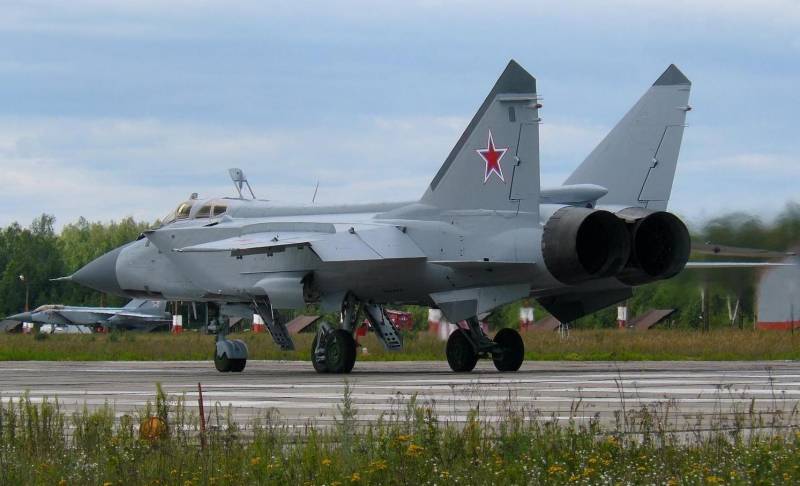
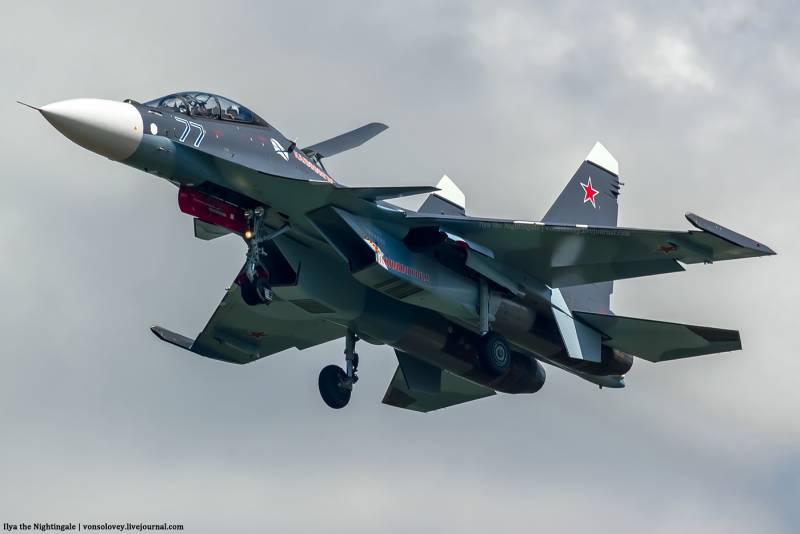
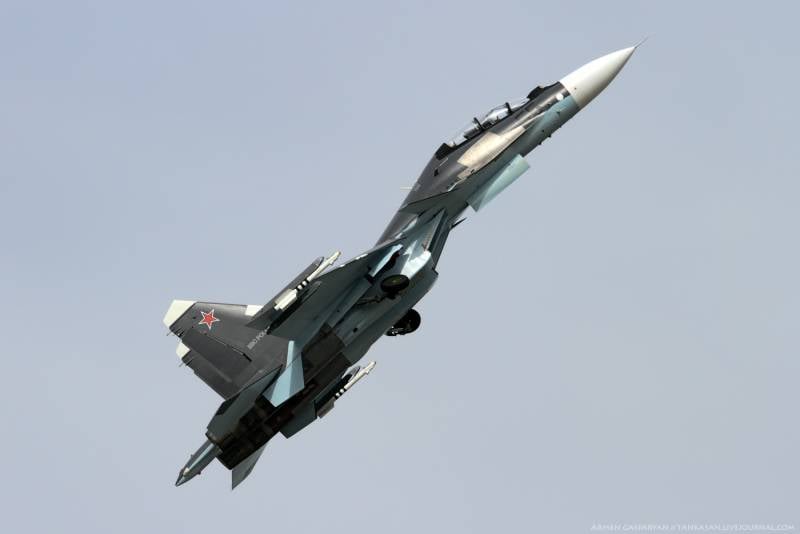
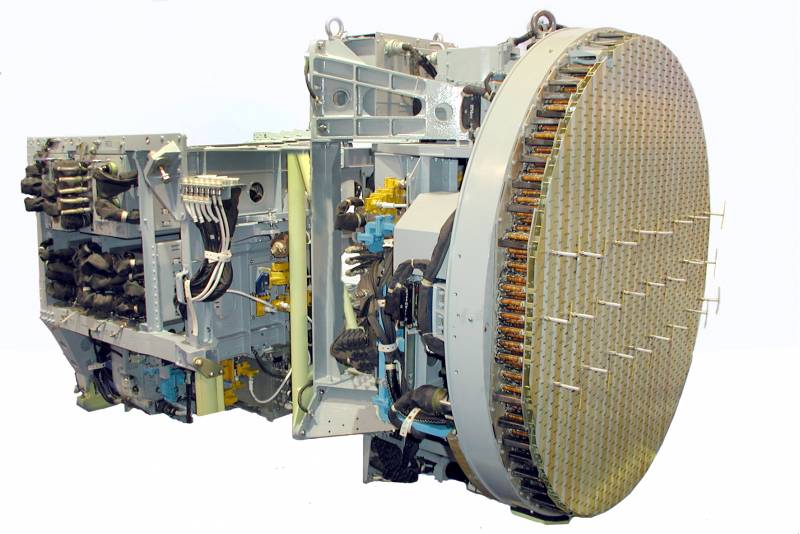
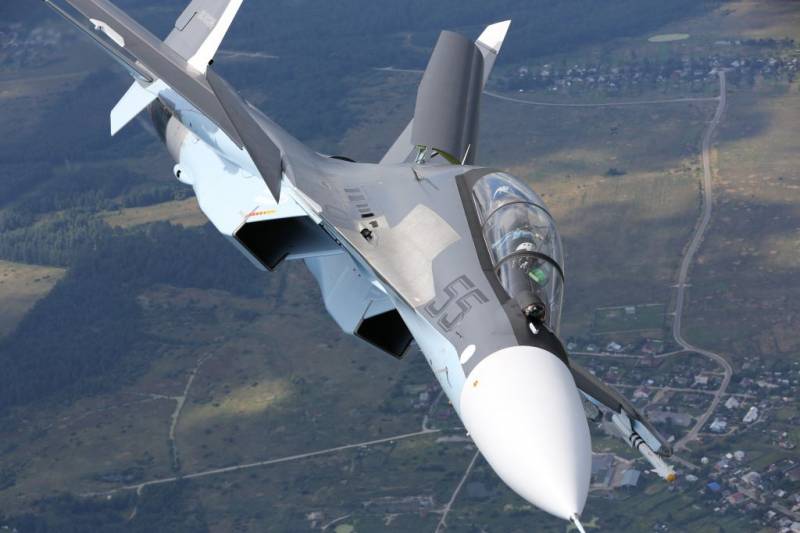
Information